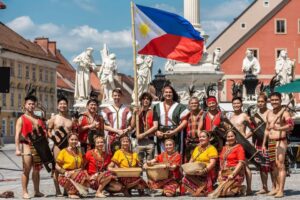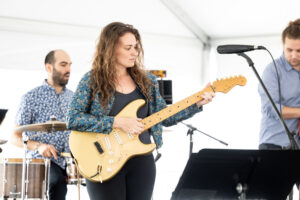AAPI Grantee Spotlight: Parangal Dance Company
By Mackenzie Kwok
Parangal Dance Company is a Bay Area-based Filipino Folk Dance and Music Company. They perform globally, host workshops to raise awareness of Filipino folk culture, and emphasize the continuity of indigenous Philippine traditions. In 2022, Parangal received support through USArtists International to perform at the Folkart International Festival in Maribor, Slovenia. We spoke with Artistic Director Eric Solano about their engagement.
Why is it important to Parangal to showcase different Indigenous art forms in performances and programming?
Philippines Indigenous People are here pre/post colonial and amidst modern time and technologies. Including the different Philippines Indigenous Arts forms in our programming and performances are crucial and at the forefront in our work to create awareness, visibility, appreciation, connection and bridge the indigenous communities with the world! It is rare opportunity to meet, see and have direct interaction with Indigenous People. We are fortunate that Mid Atlantic and its USArtists International program furthers our reach beyond our means to make this possible. Thank you!
How does Parangal collaborate with Indigenous cultural bearers in the Philippines?
We have cultural immersion in the Philippines and when work is created, Indigenous elders are part of the process providing us feedback before we share to the public. When opportunity and funding permits they are part of our workshop, production and tours. We also connect our elders to artists and organizations that look to align their program in collaboration with Indigenous Culture Bearers
What are some highlights from performances at Folkart International Festival in Maribor?
We had a great time at Folkart International Festival in Maribor!
We had the honor performing with Jenny Bawer Young, Kalinga Culture Bearer
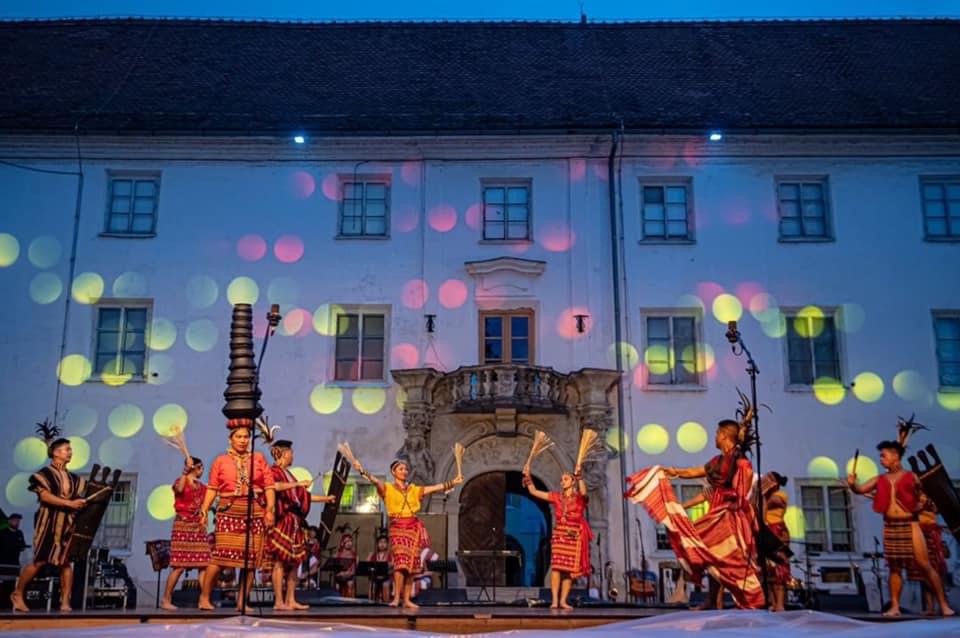
Display caption
Image: Performance with Jenny Bawer Young. Credit: Eric Solano.
We had Cultural exchanges with folks from different countries. See videos here.
We made new friendships across the globe and met the communities that we performed for. For instance, Filipino residents of Maribor and from Austria came to watch one of our shows.
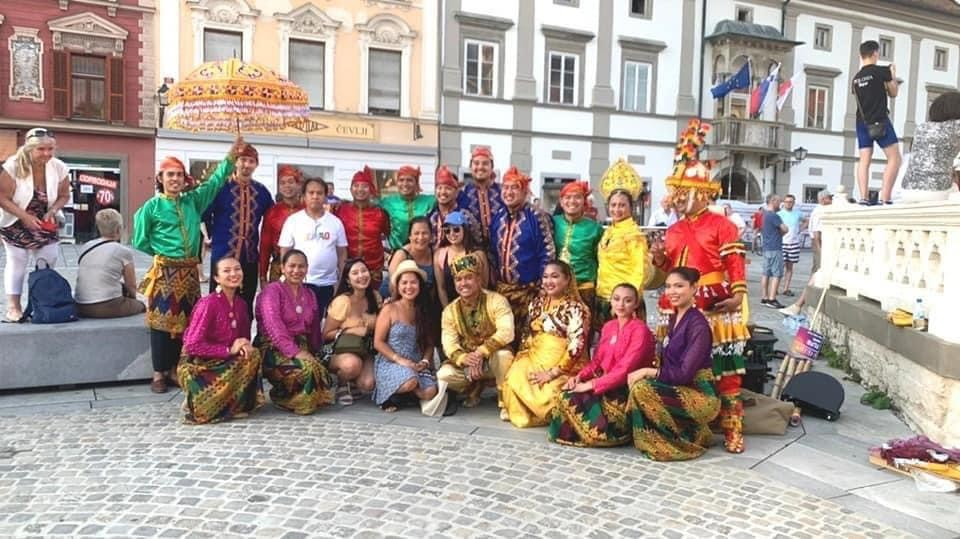
Display caption
Image: Parangal and friends. Credit: Eric Solano.
Support to attend the Folkart Maribor festival was crucial for us, especially as we were able to travel after COVID. With anti-Asian hate on the rise, we hope the presence of Asians, namely Filipinos in Slovenia showed our presence: we are here, and in this festival, we can be as one. Additionally, we acknowledge that there are still stigmas regarding headscarves. We hope that our dances and clothing showcased that headscarves are part of who we are.

Display caption
Image: Parangal Dance Company in Maribor, Slovenia. Credit: Eric Solano.
Do you have any upcoming projects you are excited about?
We are excited for exciting milestones at Parangal this year! In May, we celebrate our 16th anniversary along with AAPI Heritage Month.
In July, we have our first tour in Southeast Asia. We will have our first Indonesian tour with two of our culture bearers from the Philippines: a Sama Culture Bearer from Tawi-Tawi, Nursida Diamson Jaluddin, and a Maguidanaon Culture Bearer from Cotabato City, Habib Mohammad.
We have performances and festivals in the San Francisco Bay Area – learn more here.
In October, we will have our very first full-length production inspired by Maguindanaon traditions, featuring Culture Bearer Faisal Monal from Cotabato City in Mindanao.
To learn more about Parangal Dance Company, visit their website at: https://www.parangal.org/
Follow them on Instagram at @parangaldance and on Facebook.
For more images from their performance at Folkart Maribor, visit: https://www.facebook.com/media/set/?set=a.3137248733195714&type=3
Jewish Heritage Month Spotlight: The Lillian and Albert Small Capital Jewish Museum
By Mackenzie Kwok
The Lillian and Albert Small Capital Jewish Museum explores the Washington, DC area’s Jewish culture, history, and experiences. In 2023, the Capital Jewish Museum (CJM) received support from the Special Presenters Initiative to host the Sephardic ensemble, Minnush, to headline their inaugural block party.
We spoke with Education Manager for Programs Lisa Del Sesto about Minnush’s performances, the CJM block party, and community partnerships.
Why was it important to CJM to bring Gina Sobel and Minnush to headline the inaugural block party and workshops? How does this fit with CJM’s mission?
The Lillian and Albert Small Capital Jewish Museum invites visitors to Connect. Reflect. Act. and Gina Sobel and Minnush were the ideal fit to bring our mission to life through music and storytelling. Minnush brings Sephardic* music to Jewish and non-Jewish communities, inspiring audience members to connect personally and collectively through the music. As local artists telling local stories, their music inspired attendees to reflect on traditional music and contemporary influences that contribute to its development. By emphasizing the music’s immigrant and refugee stories, we hope the performance prompted attendees to act on behalf of tolerance and acceptance.
*Jewish communities originating in the Iberian Peninsula, which dispersed to regions including the Balkans, the Levant, England, and the Americas following expulsion from Spain and Portugal in the 15th and 16th centuries
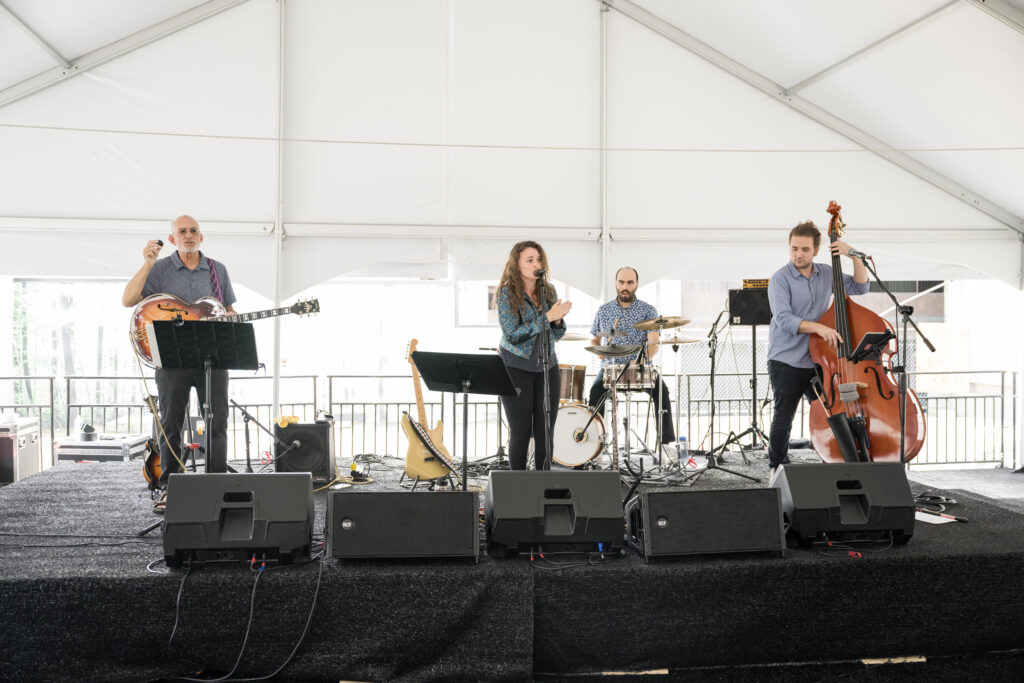
Display caption
Image: Live Minnush performance at the Lillian and Albert Small Capital Jewish Museum’s Block Party, September 2023. Credit: Chris Ferenzi.
What are some highlights from the block party and workshops?
The block party welcomed neighbors – such as Holy Rosary Church, our across the street neighbor, social justice organizations – such as Jews United for Justice, an organization we continue to partner with on civic engagement initiatives, arts and culture organizations – such as our neighbors down the block, the National Building Museum, and community building organizations such as Sixth and I. Together our 12 partners created a welcoming, interactive, and educational event. Minnush was instrumental in setting the tone of the day and building on opportunities for attendees to find belonging at this event and education opportunities through their meaningful music and workshops that allowed for interaction and discovery.
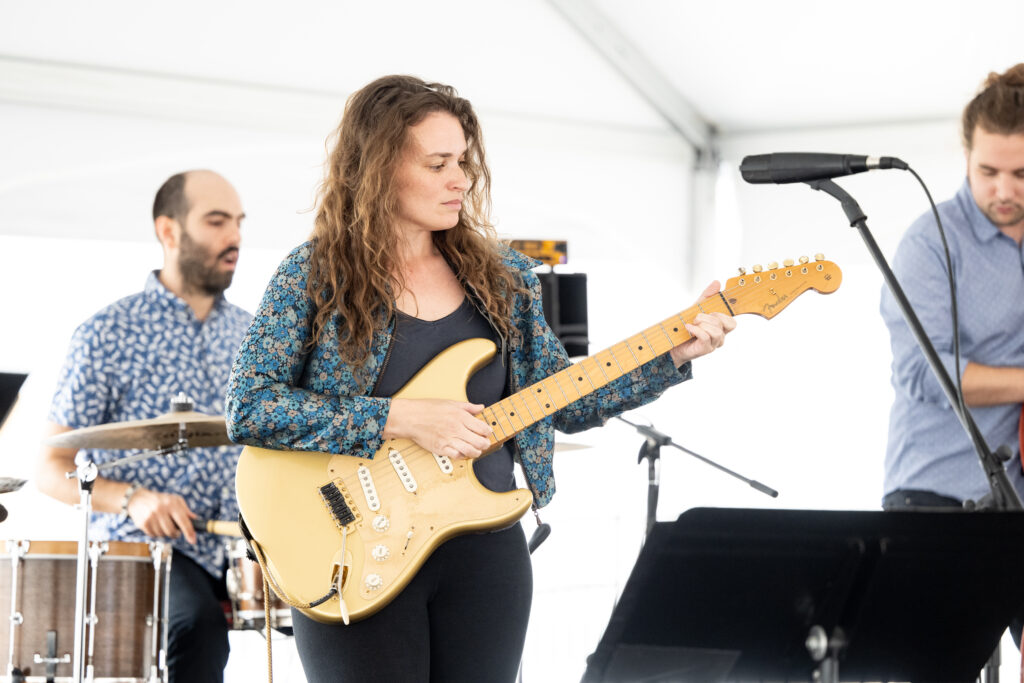
Display caption
Image: Close up of Gina Sobel performing with her band Minnush at the Lillian and Albert Small Capital Jewish Museum’s Block Party, September 2023. Credit: Chris Ferenzi.
What community partnerships were strengthened by this block party?
Ongoing partnerships were built with several of the community partners highlighted at the Block Party. Casey Trees and Interfaith Power and Light partnered with us on two subsequent programs including a panel conversation on Environmental Justice and our community Passover seder, Nights at the Seder Table. Jews United for Justice also partnered on the seder and they will oversee an additional program on June 5th about decriminalizing street vending.
In August we are hosting a sandwich making night to donate food items to Martha’s Table and the Edlavitch DCJCC Center for Social Responsibility is co-presenting this program.
Our partnerships both within and outside the Jewish community continue to thrive and amplify our impact in the local community.
The Block Pary highlighted the high value in building deep, meaningful relationships with partners and acted as an example for how to do it even better in the future.
Do you have any upcoming programs or projects you are excited about?
Our newest special exhibition, “I’ll Have What She’s Having”: The Jewish Deli, running May 15 – August 20, 2024 tells the story of the Jewish deli in the United States. It discusses themes of immigration, assimilation, and community building, specifically for an Ashkenazi Jewish experience. We added a bit about DC’s Jewish deli scene as well. We have a number of dynamic programs inspired by this exhibit, including a Museum after hours party, CJM After Sunset: Deli Nights on May 30, from 6 – 9 pm. The event will include 10- minute spotlight talks that dive into various themes and stories from the exhibit. Spotlight talks will be delivered by authors, Ted Merwin and Michaele Weissman, and DC food and hospitality expert, Nycci Nellis. Additional highlights include music from the heyday of the deli, pickleback shots and a signature cocktail, make your own pickle seasoning, the opportunity to learn more about the culinary history of favorite deli dishes, and much more. On August 7th we are partnering with Edlavitch DCJCC Center for Social Responsibility and Mazon: A Jewish Response to Hunger, on a program about local food insecurity, Mazon will lead a workshop about understanding food insecurity, we will hear from a speaker from DC Central Kitchen, then we will make sandwiches to donate to Martha’s Table.
Nothing says Jewish heritage like food – come check out the exhibit and programs!
To learn more about the Lillian and Albert Small Capital Jewish Museum, visit their website here. Follow them on Instagram at @capjewishmuseum and on Facebook.
